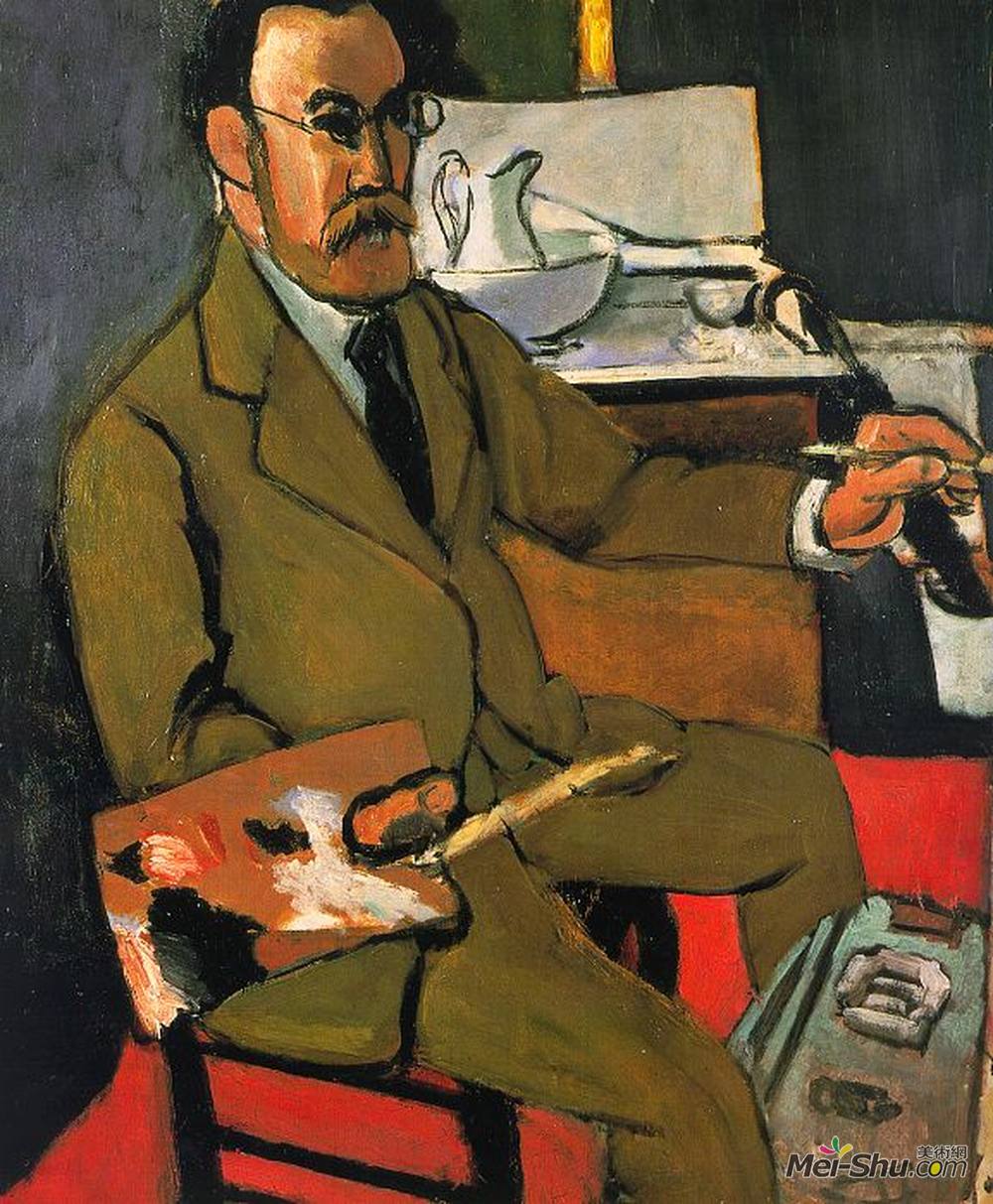
亨利·马蒂斯(Henri Matisse)
艺术家: 亨利·马蒂斯
生于: 1869年12月31日;该托康布雷西,北部、法国
卒于: 1954年11月03日;尼斯,阿尔卑斯群岛,法国
国籍: 法国
流派: 印象派,后印象派
领域: 绘画,版画,雕塑,绘画
受影响: 爱德华·蒙克,皮耶尔·奥古斯特·雷诺阿,阿尔弗莱德·西斯莱
影响: 马克·夏加尔,巴勃罗·毕加索,Lee Krasner,Max Pechstein,费尔南德·莱热,Chaim Soutine,Karel Appel,Balcomb Greene,Man Ray,Mikhail Larionov,Guan Zilan,Carlos Nadal
朋友: Xavier Martinez
机构: 学院朱利安,巴黎,法国
亨利·马蒂斯是法国画家、绘图员、雕刻家和版画师。他的作品因使用色彩而闻名,与毕加索和杜尚的作品一起,被认为是现代造型艺术的基础。18岁时,他去学习法律,作为一名法院管理人员。但是,在一次阑尾炎之后,他母亲给了他颜料和画架来消磨时光,他开始画画,很快就离开了法学院去追求他的艺术生涯,这使他父亲很沮丧。1897年和1898年,当他拜访他的朋友,画家约翰·彼得·罗素,在贝利岛时,他接触到了当时几乎不为人知的梵高的作品,这彻底改变了他的绘画风格。他是所有艺术的爱好者,沉浸在同行们的作品中,经常因为购买其他艺术家的作品而负债累累。他也从其他艺术家的作品中获得了很多灵感,从日本艺术、印象主义、后印象主义和点主义等各种来源汲取灵感。他的作品以“野兽”或“野性”为特征,经常遭到严厉的批评,这使他难以养活妻子和孩子。由于对作品的强烈憎恨,他在芝加哥的一个军械库展览中,1913岁的蓝色裸体被烧毁。虽然他有严厉的批评,但他有爱的追随者,包括格特鲁德·斯坦和她的家人。1907-1911年间,他的朋友们组织并资助了一所名为“马蒂斯学院”的艺术学校,马蒂斯可以在其中指导年轻的艺术家。马蒂斯晚年部分依赖轮椅,他继续创作剪纸拼贴画,并作为一名图形艺术家。他还出版了爵士乐在1947,他的印刷和书面作品的集合。在心脏病发作去世之前,他建立了自己的作品博物馆,这有助于确立他作为现代艺术运动领袖的遗产。
Artist :Henri Matisse
Additional Name :Henri-Émile-Benoît Matisse
Born : Le Cateau-Cambrésis, Nord, France
Died : Nice, Alpes-Maritimes, France
Nationality :French
Art Movement :Impressionism,Post-Impressionism
Field :painting,printmaking,sculpture,drawing
Influenced by :edvard-munch,pierre-auguste-renoir,alfred-sisley
Influenced on :marc-chagall,pablo-picasso,lee-krasner,max-pechstein,fernand-leger,chaim-soutine,karel-appel,balcomb-greene,man-ray,mikhail-larionov,guan-zilan,carlos-nadal
Friends and Co-workers :xavier-martinez
Art institution :Académie Julian, Paris, France
Henri Matisse was a French painter, draftsman, sculptor, and printmaker. Known for his use of color, his work is regarded as responsible for laying the foundation for modern plastic arts, along with the work of Pablo Picasso and Marcel Duchamp. At the age of 18, he went to study law, working as a court administrator. But, after a bout of appendicitis, during which his mother gave him paints and an easel to pass the time, he began drawing, soon leaving law school to pursue his art career, to the dismay of his father.
He was exposed to the works of Van Gogh, who was practically unknown at the time, in 1897 and 1898, when he visited his friend, painter John Peter Russell, in the island of Belle Ile, which totally changed his painting style. A lover of all art, he immersed himself in the work of his fellow painters, and often got himself into debt buying the work of other artists. He received much inspiration from the work of other artists as well, drawing inspiration from such varied sources as Japanese art, Impressionism, Post-Impressionism, and Pointillism.
His work, characterized as “fauvre,” or wild, often met with harsh criticism, which made it hard for him to provide for his wife and children. Due to vehement hatred of his works, his Blue Nude was burned in 1913 at an Armory Exhibition in Chicago. Although he had harsh critics, he had loving followers, including Gertrude Stein and her family. Throughout the years of 1907-1911, his friends organized and financed an art school, Academie Matisse, in which Matisse could instruct young artists.
In his later life, Matisse, who was partially reliant on a wheelchair, continued his artistic endeavors in creating cut paper collages, and working as a graphic artist. He also published Jazz in 1947, a collection of his printed and written works. Before his death of a heart attack, he established a museum of his own works, which has helped establish his legacy as a leading figure in the modern art movement.